The East. A word that calls forth memories of expeditions, the search for unknown worlds, of odyssey and discovery. The world – an oyster for seafaring adventurers seeking unmapped lands. Bali’s own eastern territories hold similar repute, a land that lures in those eager to surround themselves with nature and foster a sense of exploration on foot.
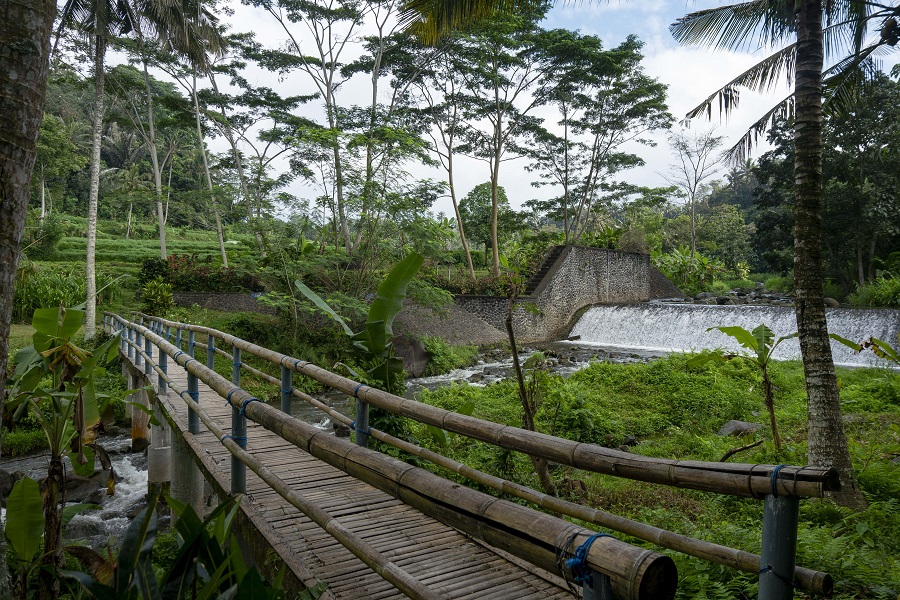
One area in Bali’s eastern regions that offers such a feeling is Tenganan, in the regency of Karangasem. Found only an hour and a half’s drive from South Bali, and 3km north of the popular Candidasa seaside village, Tenganan is best known for its Bali Aga (ancient Balinese) village, or Desa Adat Tenganan Pegringsingan. The small community here have conserved their unique customs and traditions for centuries, showcasing rituals and a way of life quite different from what is seen in the majority of Bali.
Such unique customs that continue include the annual ‘Mekare-kare’ ritual, or the pandan wars, where boys and men battle one another with the spiny leaves of the pandan plant. Another is the geringsing textile, a ‘double-ikat’ woven cloth much sought-after by textile enthusiasts — believed to have magical protective properties, but nonetheless a complex cloth and a time-consuming tradition.
The village, however, is but a fraction of the Tenganan area. Behind it lies a prosperous Karangasem landscape, where rice fields and forests mingle across the rolling hillsides and valleys. It is believed that the 917 hectares of land, owned by the Tenganan community, were bestowed upon them by Lord Indra himself. The legend states that Indra, God of War, asked the peneges people of Bedahulu (the Tenganan ancestry) to locate his horse. They found it, though already dead, Indra rewarded the people by offering them land as far as the horse’s carcass could be smelled. Cunningly, the peneges people cut the horse’s body and spread it across the valley, to Bukit Kaja, Kauh, and Kangin (north, east, and west respectively), thus granting them the whole area they reside in today.
Typically, people drive straight to the village and wander the nearby surroundings. However, there is a journey that leads you to the village in a way that builds up its presence, that makes it a destination of discovery and not simply a venue to arrive at.
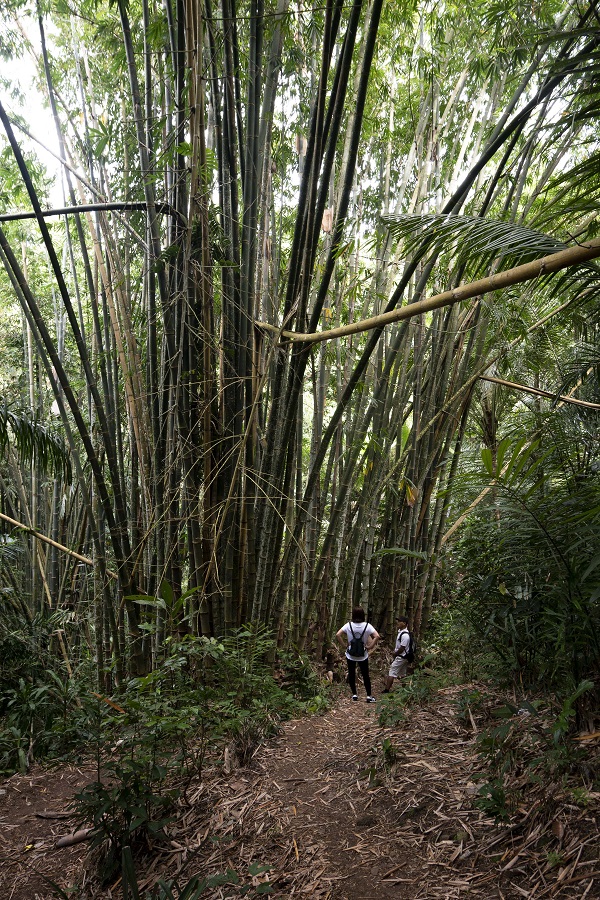
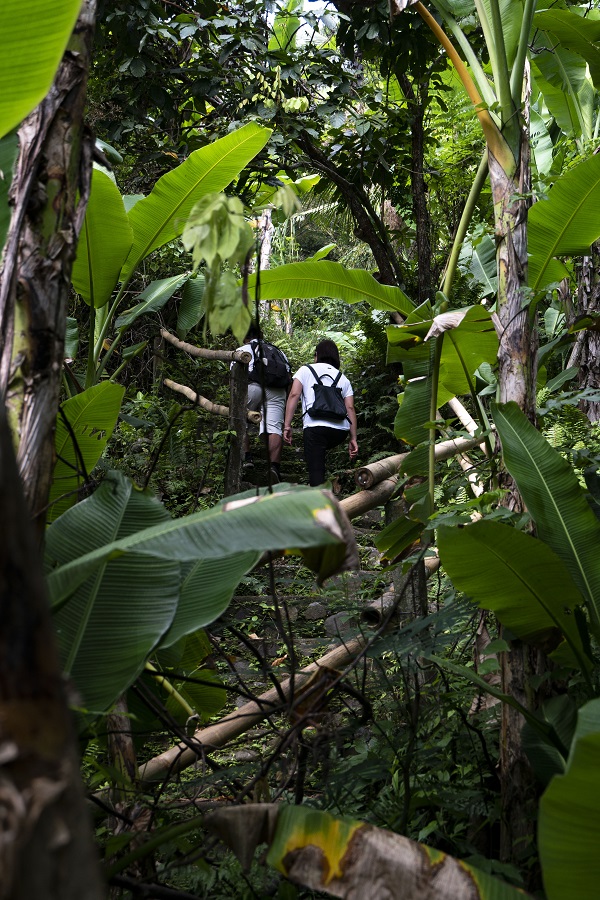
This journey on foot begins in another old village, Kastala, found north of Tenganan Pegringsingan on the far side of the valley. A bamboo bridge across the river kicks off the approximately 2-hour trek, at least for those who like to take their time and notice the details of the surroundings. An initial ascent takes you through the trees to the top of the adjacent valley ridge. These are the local farmers’ paths, following the contours of the terraced rice fields that climb up the valley, as well as the network of weirs and canals that make up the area’s subak, an ancient water-sharing system distributing the required irrigation evenly amongst the area’s many rice farmers.
Here, on the backside of the Tenganan valley, the views are vast, opening up to a rolling, rural landscape patched by different crops, depending on the season. Of course, timing one’s ambles for when the rice crops are bursting, their green stalks bending from the weight of the bounty, make for the best views.
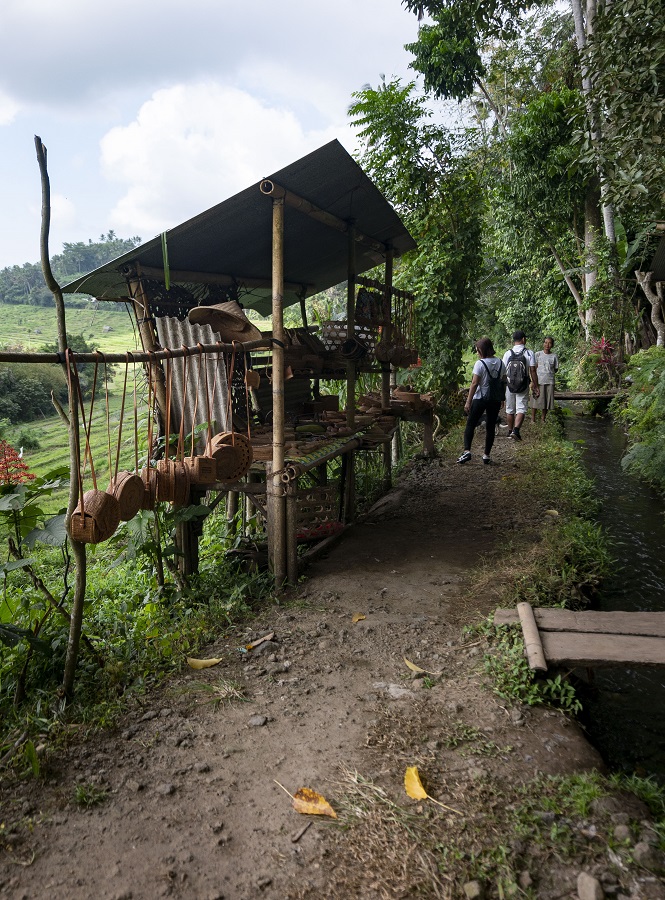
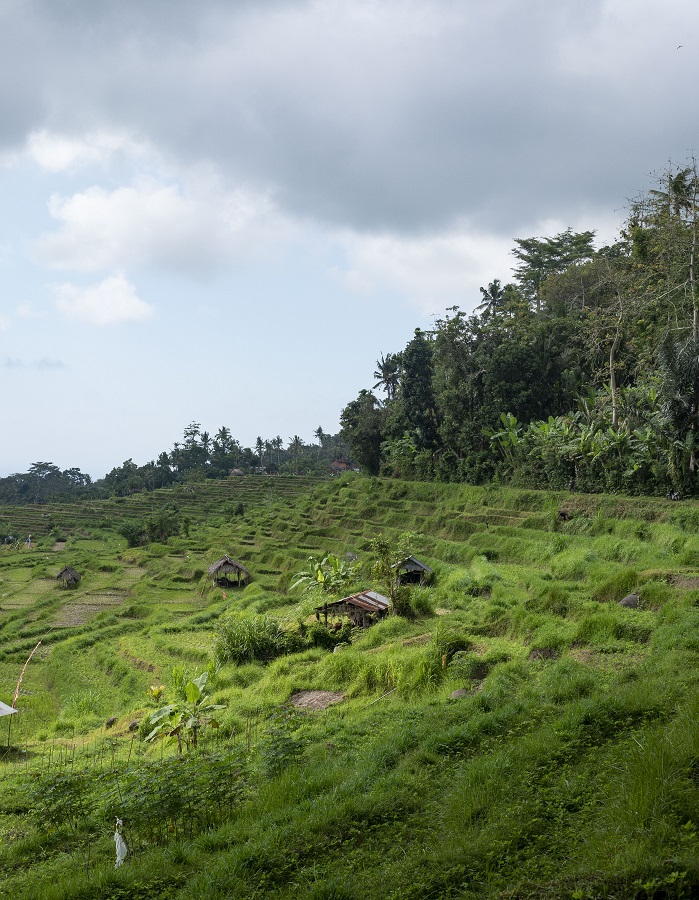
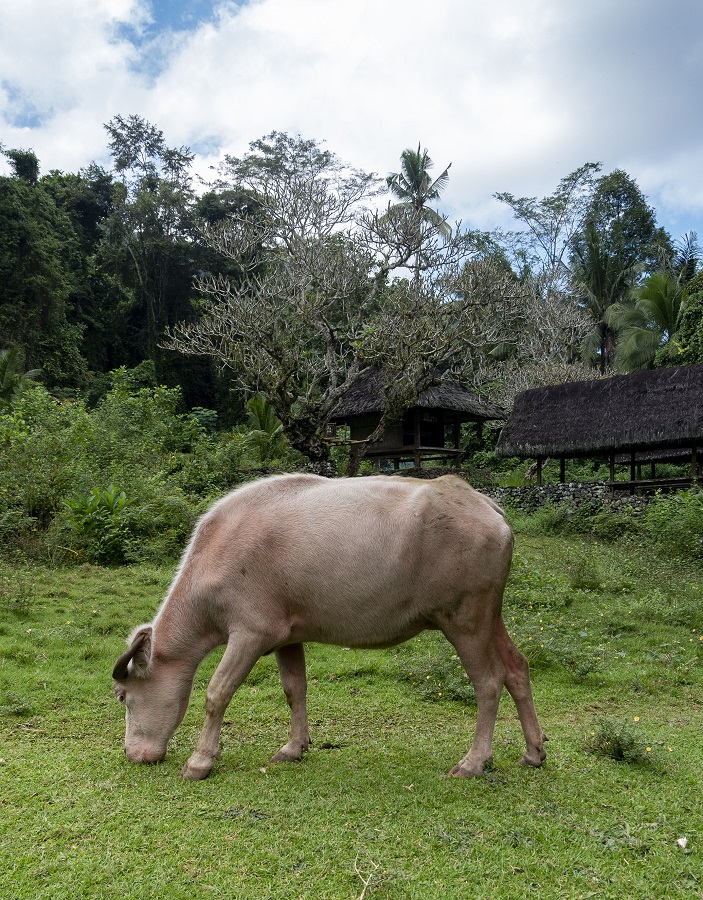
Much of the trek traverses the top rim of the valley, the interior lined thick with forest. Tracks lead deeper into the wilderness, where surprisingly wild porcupines are said to roam; proof of which was presented by a local resident who managed to capture one. So, the wilderness does indeed remain wild. On good days, especially early in the morning, the east and southeast views put Bali’s mountains on display: the peak of the great Mount Agung can be seen peering from its perch above the clouds, and Mt. Lempuyang adds a dramatic backdrop to the already impressive vista.
A handful of enterprising farming families have built make-shift souvenir shops along the paths, selling mainly woven goods, like baskets and bags. This area was said to be the origin of such handicrafts, now popular across the boutiques in Kuta, Seminyak, Canggu and Ubud, handmade using the dried stalks of a local vine.
The trek becomes more interesting as you travel into the interior of the Tenganan valley, where the terrain changes from farmland to open forest. The variety of vegetation makes for a more inquiring stroll, as one can spot the fluffy pods hanging from the branches of the kapok trees, or the soaring durian trees ready to drop their dangerous fruit (from the risk of stench or indeed, high altitude impact!) The wild bamboo, left to its own devices, grows in giant bunches to impressive heights and girth. As a community-owned forest, the trees here are only to be cut down upon approval of the villagers, often for ceremonial use or to make new structures for the village itself.
Walks through paths and riverbeds wind deep into the valley centre, descending from the ridge into the heart of Tenganan country. Slowly, the forest path broadens, eventually opening up to the most northern temple complex of Tenganan Pegringsingan. Also an iconic sight, the temple grounds house an ancient banyan tree and holy buffalo roam as they graze on the blessed lands.
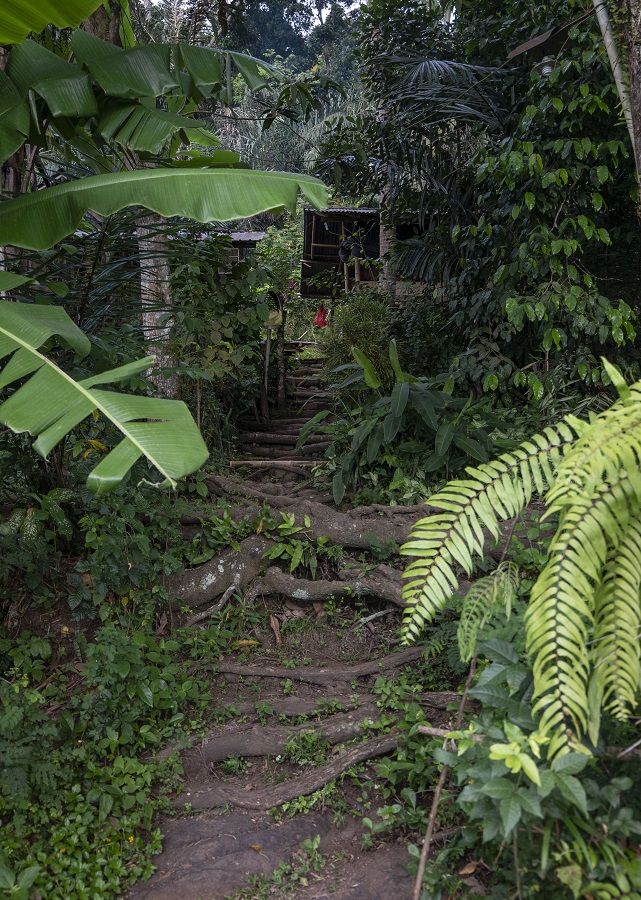
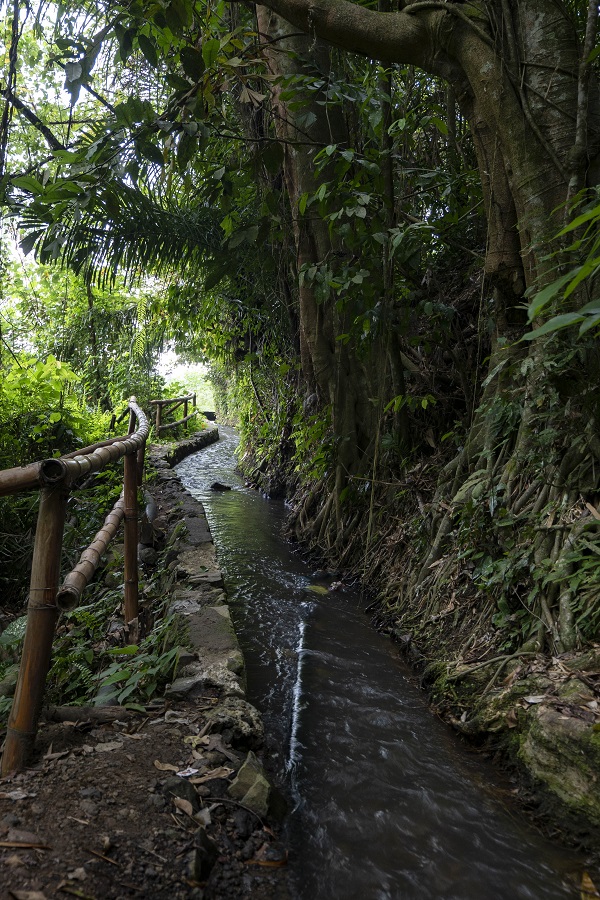
This entrance into the village, essentially through the backdoor into the quaint grounds of the temple area, creates a feeling of discovery. Trudging through farmland and forest to find a traditional civilisation on the other side.
After the temple area, the village is open to wander around, witness the geringsing cloths being woven in the homes, or to see the one-of-a-kind structure of the Desa Adat village itself.
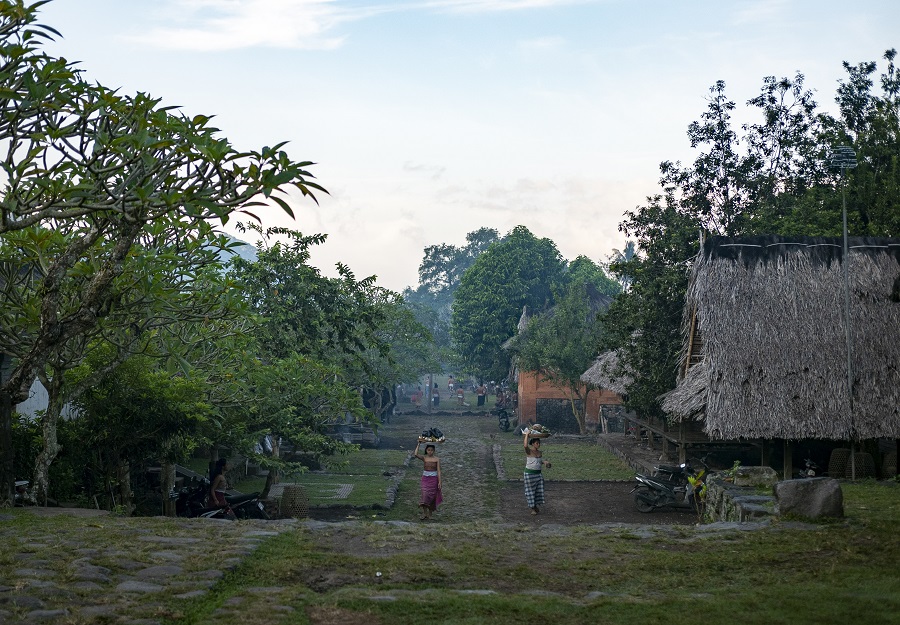
Trekking Notes:
Alila Manggis, located 10-minutes away from Tenganan, offers guided tours from Kastala to Tenganan Pegringsingan. The resort is an ideal choice of accommodation for those looking to explore more of east Bali’s natural landscapes and cultural sites. For more information head to alilahotels.com/manggis.







